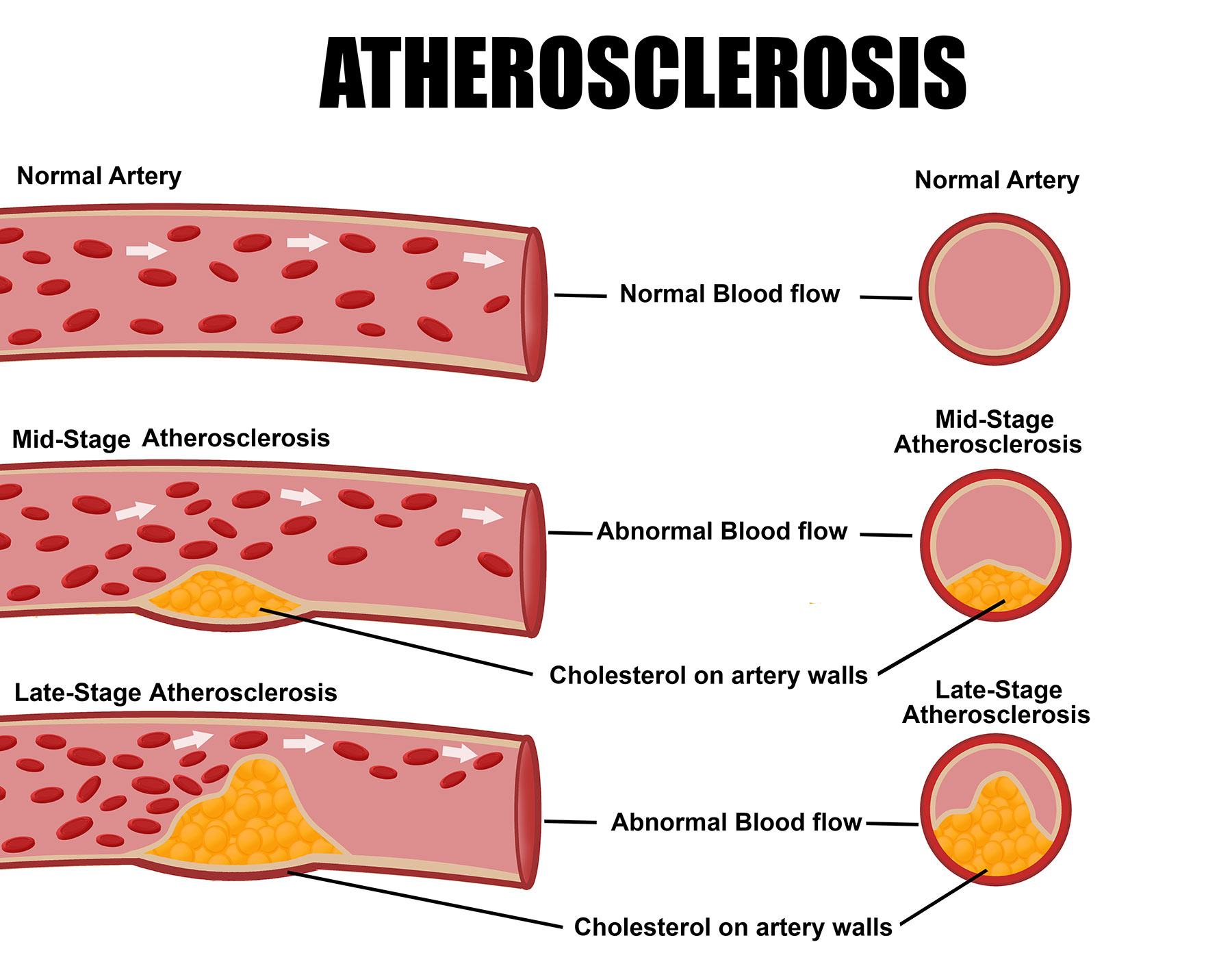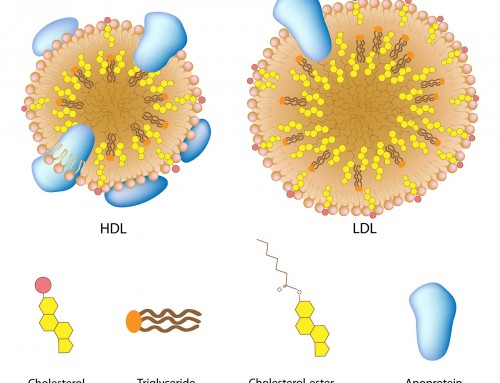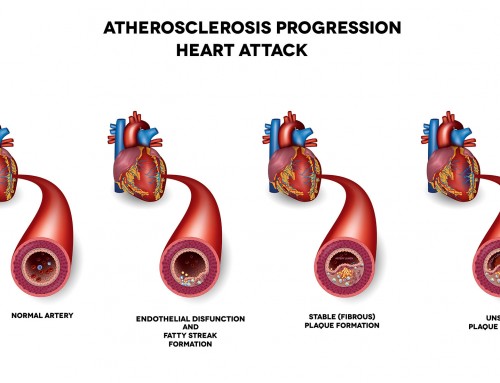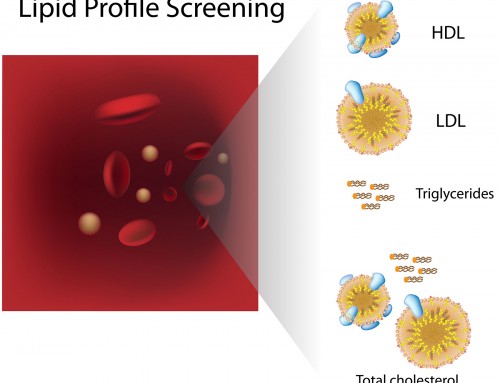What is Atherosclerosis and its associated risk factors?
Atherosclerosis is a condition where plaque progressively builds up in the arteries over time, causing narrowing and hardening of the arteries.
Excess LDL cholesterol in the bloodstream accumulates as plaque deposits which restrict or block oxygen supply to organs and other tissues, leading to serious problems such as cardiovascular disease. For example, if the oxygen supply to the heart is blocked, a heart attack can result. If the oxygen supply to the brain is blocked, a stroke can result.
The risk factors associated with elevated LDL cholesterol levels are genetics, ethnicity, gender, age, alcohol, diet, smoking, obesity, activity level and other health problems.
Genetics
Genetics can play a role in blood cholesterol levels. If there is family history of atherosclerosis, cardiovascular disease or familial hypercholesterolemia, the risk for high blood cholesterol increases. Certain genotypes such as the APOE4 genetic variant, or specific mutations in LDLR, APOB and PCSK9 genes (associated with familial hypercholesterolemia) can result in higher LDL cholesterol in blood.
Ethnicity
People with Indian, Pakistani, Bangladeshi or Sri Lankan origins have an increased risk of developing high blood cholesterol levels.
Gender and Age
The level of LDL cholesterol in blood increases with age. The risk of high cholesterol is increased for males age 45 or older, and females of age 55 or older (after menopause).
Alcohol
Excess consumption of alcohol can elevate triglyceride and cholesterol levels in the blood, so alcohol consumption should be limited to recommended doses.
Diet
Cholesterol in foods can affect blood cholesterol levels. Cholesterol can be found in foods from animal sources, such as meat, egg yolk and cheese. Both saturated fat and trans fat from diet can also increase LDL cholesterol levels in blood. Saturated fats are found in dairy products, meats, chocolate, deep-fried and processed foods, and trans fats are found in processed and deep-fried foods.
Smoking
Cigarette smoking can trigger the onset of atherosclerosis by damaging blood vessel walls and narrowing the openings of blood vessels.
Obesity and physical activity
Being overweight can lead to increased LDL cholesterol levels. Low physical activity can also be a risk factor for developing high blood cholesterol and cardiovascular disease. At least 30 minutes of regular exercise daily can help to lower LDL cholesterol, increase HDL cholesterol levels and maintain body weight.
Other health problems
Some pre-existing medical conditions such as diabetes, thyroid, kidney and liver disease can cause high cholesterol levels in blood. They are considered secondary causes, which are in turn controlled by medication and treatment.
References:
Mozaffarian D, Benjamin EJ, Go AS, et al. (2015). Heart disease and stroke statistics—2015 update: a report from the American Heart Association. Circulation. 131: e29-322.
Song Y, Stampfer MJ, Liu S (2004). Meta-Analysis: Apolipoprotein E Genotypes and Risk for Coronary Heart Disease. Ann Intern Med. 141(2): 137-147.
What is Cardiovascular Disease? American Heart Association. (Reviewed 12/18/2014).
Heart Disease in Women. National Heart, Lung and Blood Institute (Updated 04/11/2014)
DNA In the News2017-04-06T21:55:49+00:00




